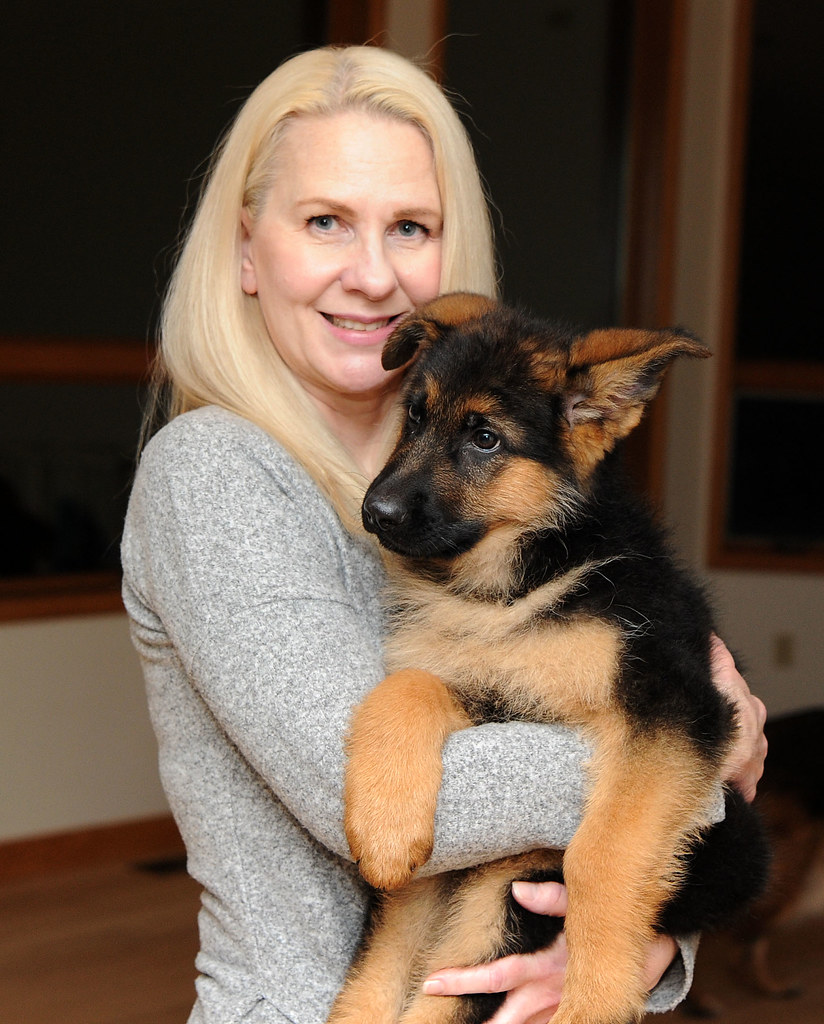Where Can You Find The Best German Shepherd Life Expectancy Informatio…
페이지 정보
본문
 Health Issues That Affect German Shepherd Life Expectancy
Health Issues That Affect German Shepherd Life Expectancy German Shepherds peak between the ages of 2 and schäferhundwelpen kaufen 6. They are at their best in terms of physical fitness and mental toughness.
German Shepherds peak between the ages of 2 and schäferhundwelpen kaufen 6. They are at their best in terms of physical fitness and mental toughness.They are at greater risk for diseases of the musculoskeletal system, cancer, and other health conditions which could affect their lives.
German Shepherds in the working line typically lead more active lives than their show line counterparts. They need a diet rich in nutrients to support their active lifestyles and exercise.
Cushing's Disease
German Shepherds are susceptible to a variety of health issues, including hip dysplasia, elbow dysplasia, degenerative myelopathy and Cushing's disease. Understanding these issues and taking the appropriate steps to prevent or manage them will allow your dog to live a longer and healthier life. Regular visits to the vet, proper diet and regular exercise will keep this large breed in good health.
Cushing's disease (hyperadrenocorticism) occurs when a pet's body produces too much cortisol, a natural steroid. The condition is typically caused by a tumor that has formed on the pituitary gland, or one of the adrenal glands. In about 80% to 85percent of cases, the tumor is on the pituitary gland which is a pea-sized, sized organ located at the brain's base. About 15 percent of the cases the tumor is situated on the adrenal glands that are located above the kidneys.
If a pet is suffering from Cushing's, it becomes active and consumes more food than normal. The condition also causes increased thirst and urination. As a result, the pet will need to drink more fluids and go outside more often for potty breaks. Other signs of the condition include hair loss, a potbellied appearance, and a lack of energy.
A doctor can diagnose this condition by drawing blood and then performing the adrenocorticotropic hormone stimulation test. This test involves injecting the patient with ACTH and analyzing the adrenal response. The results indicate how high or low his cortisol levels are.
Once a dog has been diagnosed with Cushing's disease, he will require medication for reinrassiger deutscher schäferhund zu verkaufen schäferhund (Https://click4r.com/posts/g/18850774/german-shepherd-for-sale-the-good-the-bad-and-the-ugly) the remainder of his life. This medication will stop the growth of the tumor and keep his symptoms under control. If they are monitored properly and treated, most dogs with this condition will live normal lives. However, the condition could be fatal if it is not diagnosed and treated early.
Epilepsy
German Shepherds who are correctly diagnosed and treated for epilepsy could remain healthy and live a long, happy life. However, a dog that suffers from seizures that are not controlled may die due to oxygen starvation or a traumatic injury that occurs during a seizure. Untreated epilepsy may also cause depression or a failure to eat or drink, which could quickly turn fatal.
The impact of epilepsy in German Shepherds can be affected by the way in which the condition is managed by the owner. An owner who can closely monitor the dog's medication, devise appropriate strategies for managing seizures and establish a solid support network is more likely to extend their pet's life span.
As with all breeds of dog German Shepherds are also prone to suffering from dental diseases. Untreated, this condition can cause serious dental and gum damage and may lead to infections in other organs like kidneys, the liver and the heart. Dogs that receive regular professional dental treatment are less susceptible to this problem.
The deep chests of the Shepherd breed make them more prone to bloating. This dangerous stomach disorder occurs when the intestines twist and expand with gas, cutting off blood flow to the stomach and spleen. This condition can be fatal in less than 30 minutes if not addressed promptly. If your Shepherd exhibits signs of bloat, like retching or heaving with little or no food coming up or an overly large stomach, or lying in a prayer position (front feet down, rear end up) then take them to an emergency vet right away.
German Shepherds who experience bloat are at greater chance of developing hip dysplasia and degenerative myelopathy than other breeds. It is essential to be on top of your dog's veterinarian treatment and preventative measures.
Elbow Dysplasia
The elbow is an articulation between the humerus, (the long bone of the upper forelimb) and the ulna and radius, (the two bones of the lower forelimb). The three bones have to fit perfectly to allow for a lifetime of motion. When they don't, a condition called elbow dysplasia is created. It's the most common cause of lameness in front legs (limping) in dogs.
In some instances of the disease the cartilage between bones becomes damaged and causes pain, swelling, and lameness. The damage is irreparable therefore early diagnosis and treatment is crucial.
The first signs of the disease in a dog are a slight or intermittent limp, particularly after exercise or after getting up from a seated position. As the disease progresses, the dog's range of motion in the elbow decreases, and Was kostet ein reinrassiger schäferhund there could be fluid inside the joint.
There are three main types of elbow dysplasia. Fragmented Coronoid Process, Osteochondrosis of the Humeral Condyle, and Ununited Anconeal Process. Each of these conditions is distinct in its appearance on xrays and could be found in one or both elbows.
The best method currently to prevent this issue is to screen breeding animals for elbow and hip problems. These conditions can still develop despite screenings. Breeding only with dogs whose elbows have been proven healthy is the most effective method. This will ensure that the genes responsible for elbow dysplasia do not pass to offspring.
Degenerative Myelopathy
Degenerative Myelopathy is an illness of the nervous system that slowly affects the spinal cord of German Shepherd dogs and causes weakness in the hind legs. DM symptoms usually appear in older dogs, and was kostet ein reinrassiger schäferhund can progress to paralysis. The condition is considered to be the canine version of Lou Gehrig's disease (amyotrophic lateral-sclerosis). It isn't known the reason why some dogs suffering from this disease get it, and others don't despite being genetically predisposed.
Unfortunately, there's no cure for DM. The symptoms can be controlled by medication, but the condition is progressive and eventually leads to paralysis of the forelimbs as well. Certain dogs can last for a number of months or even years with a high quality of life. However, it is typical for owners to choose euthanasia when their dog is in a position to walk or stand on its own.
To diagnose DM the doctor will take a detailed medical history and then conduct an examination of the neurological system. The neurologist will search for other diseases that show similar symptoms and will take blood samples to check for the genetic mutation associated with this disease. The neurologist may also request cerebrospinal fluid to allow for analysis, and to rule out other diseases. The neurologist will likely recommend MRI imaging using our advanced diagnostic imaging services. This will allow your vet to pinpoint areas of the spine that are affected by DM and monitor the progression of the disease. Additionally, physical rehabilitation therapy can be beneficial for DM patients and can help to slow the progression of the disease.
Intervertebral Disc Disease
German Shepherds can be prone to health problems that can affect their life expectancy. Knowing about these conditions and how they affect your dog can assist you in taking preventative measures to ensure their longevity.
Intervertebral Disc Disease (IVDD) occurs when the outside or inside of the spinal disk "donut" isn't remain where it belongs. Each disk is surrounded by an outer fibrous ring known as an annulus. It also has an annulus with a soft nucleus that absorbs impact. When the nucleus gets herniated it can cause severe pain and paralysis. IVDD is a degenerative disorder, but sudden trauma can trigger herniation.
Type I of IVDD is ascribed with the sudden herniation of the disc's nucleus into the spinal canal and results in intense back pain, arching of the back and lower back, weakness in the rear limbs, and hind-limb lameness. It can be accompanied by incontinence, weakness, and incoordination. If the spinal chord is compressed and dies then your dog will become completely paralyzed. They may not even be able to move their rear legs.
The development of IVDD type II is more gradual and usually occurs in older dogs. Normal wear and tear causes annulus fibers to expand with fluid. This causes compression and herniation of the spine. This form of IVDD is not triggered either by trauma or heavy exercise, which is not the case for Type I. It is evident by a reluctance or inability to turn the head.
- 이전글 Find Out What Exercise Cycle For Sale The Celebs Are Utilizing
- 다음글 6 Methods to Make Your Bitcoin Easier
댓글목록
등록된 댓글이 없습니다.

